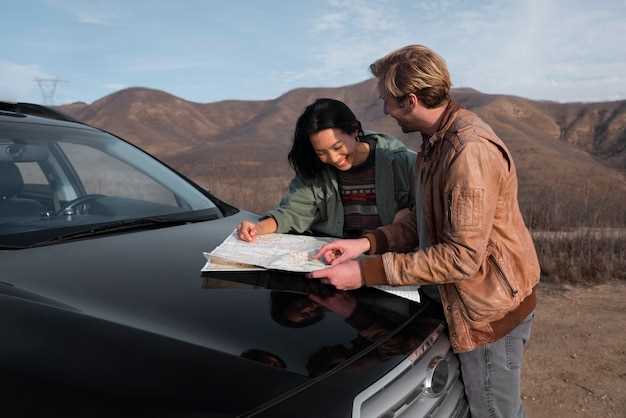
Purchasing a classic car out-of-state can be an exciting experience, but the next step–transporting it to your location–can be a daunting task. Understanding the process of shipping a car, especially a classic model, requires careful planning and consideration. From ensuring that the vehicle’s condition is preserved during transport to navigating the legalities involved, there are several factors to keep in mind.
First and foremost, you need to choose a reliable transport service that specializes in classic cars. These vehicles require special handling to avoid any damage during transit. Ensure that the transporter has experience with out-of-state shipments and is equipped with the necessary resources to protect your investment.
Additionally, you must familiarize yourself with the regulations and paperwork involved when bringing a car across state lines. This often includes understanding the title transfer process and any state-specific requirements for classic cars. By doing your due diligence, you can make the shipping process smooth and worry-free, allowing you to enjoy your classic car once it arrives at your doorstep.
Selecting the Right Shipping Method for Your Classic Car

When it comes to transporting your classic car across state lines, choosing the right shipping method is crucial to ensure its safety and integrity. Several options are available, each with its own advantages and considerations.
Open Transport: This method involves loading your classic car onto an open trailer along with other vehicles. While it is usually the most cost-effective option, it exposes your car to the elements during transit. If your classic car has a strong and durable exterior, open transport may be suitable. However, for more delicate models, this option might not provide the necessary protection.
Enclosed Transport: For those who want to offer maximum protection to their classic car, enclosed transport is the preferred method. This option places your vehicle inside a fully enclosed trailer, shielding it from weather conditions, road debris, and potential damage. While this method generally costs more than open transport, it is well worth the investment for high-value or rare classic cars.
Door-to-Door Service: Many shipping companies offer door-to-door service, which simplifies the process significantly. With this service, your classic car is picked up from its location and delivered directly to your desired destination. This convenience can save you time and effort, especially when navigating logistics related to classic cars.
Terminal-to-Terminal Service: Alternatively, terminal-to-terminal service requires you to drop off and pick up your classic car at designated shipping terminals. While this method may be more economical, it can also complicate logistics, as you’ll need to arrange transportation to and from the terminals.
When selecting the right shipping method for your classic car, consider factors such as budget, the value of the vehicle, and the distance of transport. Research multiple shipping companies to compare their services, reviews, and insurance options. Ensuring that you choose a reputable carrier will provide peace of mind during the transport of your prized classic car.
Preparing Your Classic Car for Safe Transport
Preparing your classic car for transport involves several essential steps to ensure its safety and integrity throughout the journey. Begin by thoroughly cleaning the interior and exterior of the car. This allows you to inspect it closely for any existing damage, which is crucial for documentation purposes.
Next, check fluid levels, including oil, coolant, and fuel. If necessary, top off these fluids to prevent potential leaks during transport. Additionally, consider adding a fuel stabilizer if the car will be in transit for an extended period.
Inspect the tires for proper inflation and tread condition. Under-inflated or worn tires can cause problems during transport, so ensure they are in optimal condition. It’s also advisable to check the battery charge and secure any loose components inside the engine compartment to avoid damage during the trip.
Remove any personal belongings from the car, as these can shift during transportation and cause damage. It is also wise to take pictures of the classic car from various angles, capturing its condition before transport. This documentation will be invaluable in case of any disputes regarding damages during shipping.
Lastly, if your classic car has any modifications or aftermarket parts, consider discussing these with your transport service. They may have specific recommendations to ensure that these features are protected during the journey.
Navigating Legal and Insurance Requirements for Out-of-State Transport

When transporting a classic car purchased out-of-state, it’s essential to understand and meet various legal and insurance requirements to ensure a smooth process. Every state has its own regulations regarding vehicle transport, and you must comply with these to avoid complications.
Firstly, check the regulations in both the state where the car is currently located and the destination state. This includes registration, title transfer, and any emissions or safety inspections that may be required. Some states may require a temporary registration or permit for transport, enabling you to legally drive the vehicle to its new location.
Next, insurance coverage is crucial during the transport process. Verify that your existing auto insurance policy covers vehicles during transport, particularly for classic cars that may have unique values. If coverage is insufficient, consider obtaining additional insurance or looking into specialized transport insurance that protects your investment while in transit.
Another important aspect is hiring a reputable transport company. Research different carriers to ensure they are licensed and insured. Reading customer reviews can provide insight into their reliability and quality of service. It’s advisable to confirm that they have experience transporting classic cars, as these vehicles may need special handling to prevent damage during transit.
Finally, document everything related to the transport process. Keep records of the original purchase agreement, communications with the transport company, and insurance policies. This documentation will be invaluable in case any issues arise during or after the transport.



